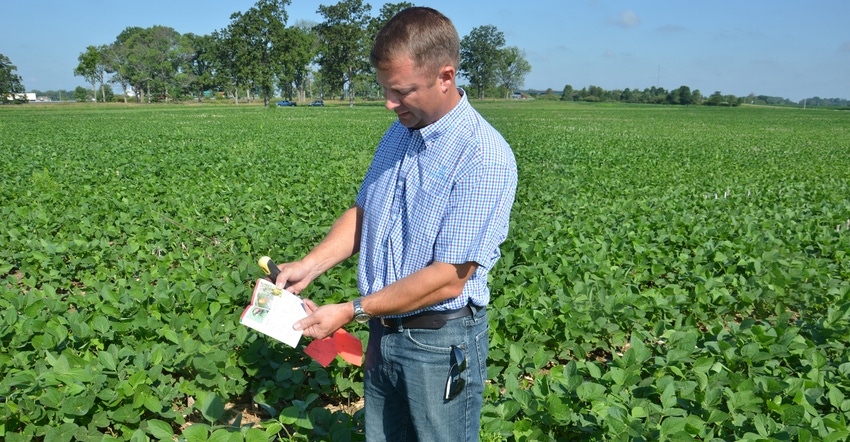
Steve Gauck was scouting the Soybean Watch 2017 field last summer. The sales agronomist for Beck’s wanted to confirm if he was right about the symptoms he saw on a few plants. He pulled out his Purdue University Corn & Soybean Field Guide and flipped to the section about soybean diseases.
“Yes, that’s it,” Gauck said. “I’m confident that is what we are seeing on those leaves.”
Scenes like that repeat themselves all season long. Even in this technology-driven time, some people still find it handy to grab a printed copy of a trusted resource and check it for information. There is certainly nothing wrong with cellphone apps. In fact, Purdue offers two versions of the field guide as apps — one for corn and one for soybeans. But sometimes, people would still rather flip pages than navigate an app or a website.
For those people, the 2018 edition of Purdue’s popular field guide, now around for more than two decades, is available for $10 each. It’s published by the Purdue Crop Diagnostic Training and Research Center. Corey Gerber is the center’s director.
“You can check out ordering information on our website,” Gerber says. “It features about 300 pages of information in color in a pocket-sized guide.” Look for ordering information on the right side of the web page.
Here are five reasons among hundreds why you would benefit from having the 2018 Purdue Corn & Soybean Field Guide handy:
1. Preparing and sending samples. There are several ways to send samples of plants, leaves and weeds to the Purdue Plant and Pest Diagnostic Lab for confirmation. There’s even an app for that! Find all the instructions on preparing and sending samples in the field guide.
2. Tracking growing degree days. The Corn Management section includes a table that shows how many growing degree days you can expect to accumulate, on average, from early March to any date throughout the growing season. Use it to help estimate whether a hybrid or variety you’re considering planting should mature before frost in your area.
3. Staging corn plant growth. You may talk about two-leaf corn or knee-high corn, but pesticide labels usually refer to corn in growth stages, such as V2 or V6. Learn how to stage corn using color pictures included in the Purdue field guide.
4. Estimating yield before harvest. The formula for corn and an explanation on how to use it are in the guide. It even gives you a range of “fudge factors” to use, depending on how big you believe kernels will be. This section has been updated over time to reflect advances in corn genetics that have affected which fudge factor you might choose.
5. Scouting. Learn which insects you should watch for and when throughout the season. There are scouting calendars for both corn and soybeans.
About the Author(s)
You May Also Like




